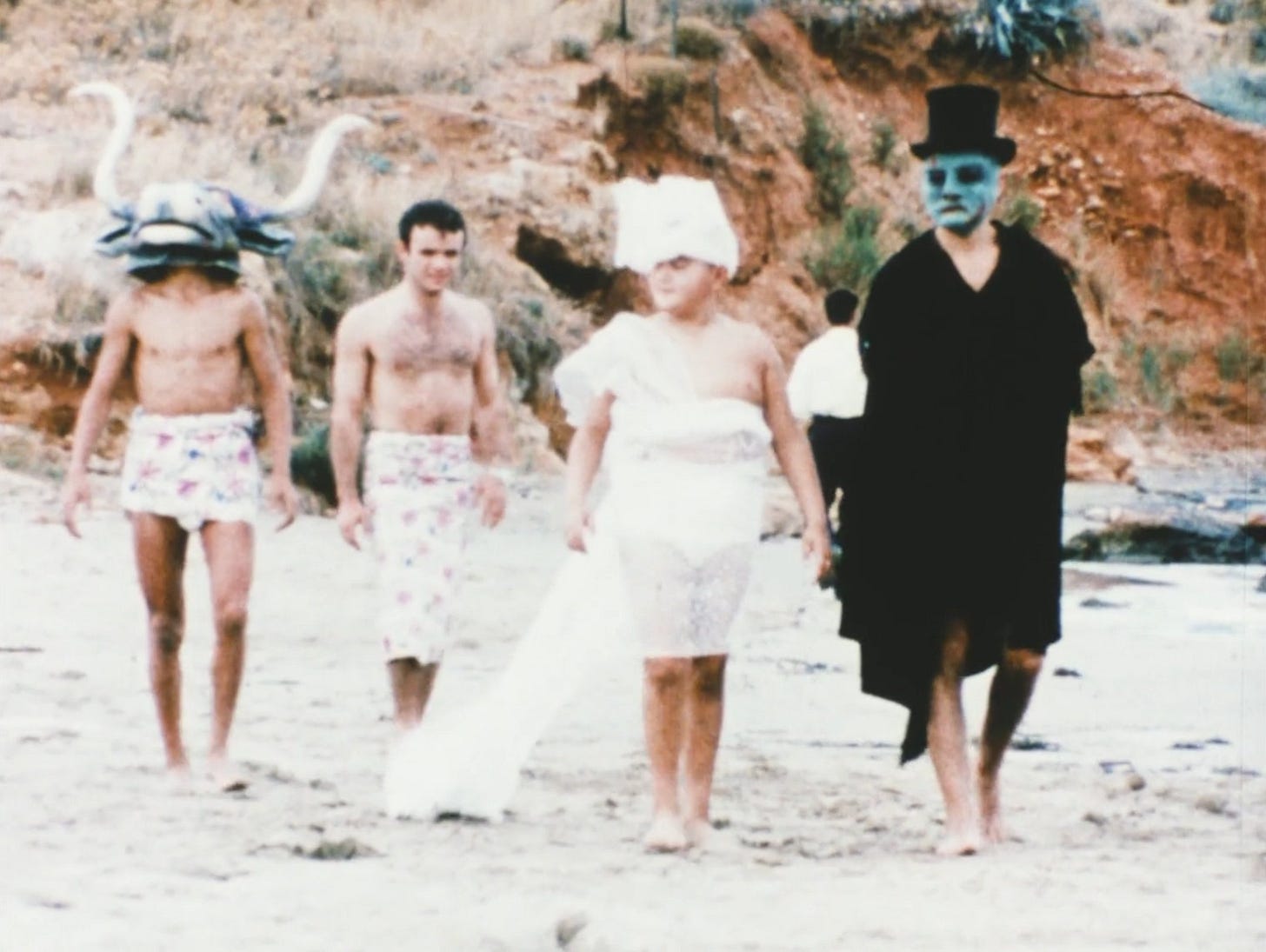The Storyteller
This week on Art & Trash, episode 16: The Storyteller, a study of Andrew Getty’s The Evil Within, notorious for its long gestation and the premature death of its maker. My thanks to poet and filmmaker David Spittle for recommending the film to me.
Andrew Getty, an heir to the Getty family fortune, made only one film in his lifetime, and it can’t truly be said that he completed it. The Storyteller, shot and edited intermittently between 2002 and his death in 2015, was a passion project with a budget far exceeding most independent films; it was the work of a person at once tormented and narcissistic, and its haunting narrative broadcasts a clear identification between Getty and his outsider protagonist. Getty’s work on the film was, by accounts, obsessive and meticulous and largely independent: he wasn’t working in a total vacuum, but he was living the film, engaged in all aspects of its production and shooting much of it in his own home. When Getty died in 2015 as a result of complications arising from his methamphetamine addiction, his friends and collaborators seized the opportunity to finish the film, releasing it under the title The Evil Within in 2017.
The tragic circumstance of Getty’s death invites speculation about the film and its themes. As I discuss in this video essay, The Evil Within is about loss of agency, the spectre of conservatorship, the strain and guilt in families. Its author loved horror culture and the influence of both the physical constitution of horror effects—be it plastic, animatronic, or puppet—and the narrative roots of horror-fantasy storytelling—from Poe and Bierce to Rod Serling and the Crypt-keeper. I argue that the film has an autobiographical aspect, and that the fears and anxieties of protagonist Dennis are a cathartic mirror of Getty’s own anxieties, that this is where The Evil Within gains its soulfulness and its empathy. Empathy might not be the first thing that one recognizes in a film in which disabled actors play ghouls, their physicality employed for shock value. But the narrative holds complex ideas about otherness, evident in its handling of Dennis, whose unspecific mental disability becomes a point of profound empathy as he struggles against the patronizing, snickering, presumptuous behaviours he encounters in the world (and which are inevitably met with violent reprisals).
Two films came to mind as I watched The Evil Within: Tod Browning’s Freaks (1932) and Michael Winner’s The Sentinel (1977). One could not find two films more unalike in their handling of othered bodies: Freaks is a film of profound, if machined, empathy in which the truly monstrous characters are conventionally beautiful, while The Sentinel, like all of Winner’s films, is eagerly offensive, populating its closing passages with images of people with physical irregularities who are meant to represent the social landscape of a Boschian hell. In a regressive simplification, Winner equates physical abnormality with evil. Between these two examples, I take The Evil Within to be far closer to the attitude of Freaks, with a crucial difference: that Browning’s film was a work of liberal compassion, albeit serving the dual purpose of leering; while Getty’s is a work of extreme, even patronizing, identification with the other.
In The Storyteller, I weave scenes from Getty’s film with those images and narratives to which it’s indebted - the plasticity of 1980s movie monsters, the terror of the inanimate-made-animate. I am also, however briefly, integrating altered images from All the Money in the World, Ridley Scott’s controversial account of the Getty kidnapping, as an acknowledgement of two things, the family legacy that Andrew Getty came up through, and the theme of cinematic puppetry, from Kevin Spacey’s ‘monster makeup’ to his erasure from the film, exiting just as he’d entered it in the trailer, his shaky approach through the deep black of a shifting mask. Later in the video, I argue that characters are puppets for actors, directors, writers; these images are a reminder of the malleability of cinema in a contemporary age of digital—and readily substitutable—puppetry.
The Evil Within is a posthumous film, and its maker made no other films. To pose an argument around its authorship is a challenge. It is, like Franz Kafka’s Amerika, a work that must be accepted in its suspension, as close to complete as it may be. In this case, the film’s incompleteness might be looked upon as a strength, its meanings more open than closed, its psychology and subtext richer for having not been subject to further refinement and deliberation. But its strangeness has little to do with it being ‘left in state’, and is more a sign of the author’s debts to an ‘American weird’ cinema typified by David Lynch. The film’s abundance of strange imagery, especially in its mythic prologue, suggest that Getty might have imagined something akin to ‘universe building,’ developing a surreal atmosphere to be perpetuated in further works, the first entry in a Storyteller’s anthology. Andrew Getty’s story is ultimately one of obsessive, uncompromising devotion. For my part, in exploring Getty’s authorship with this video, I have elected to follow the path of Stan Brakhage, whose Film Biographies mix fact and fantasy and presumption in the pursuit of the greater truths of art.
Our next episode will focus on the poet Charles Henri Ford and his production diary film Johnny Minotaur, which in recent years has circulated widely in a beautiful digital restoration thanks to the efforts of M.M. Serra and the Filmmakers Cooperative in New York City. Ford, a remarkable but minor modernist poet, made only two films, both of which serve in some ways to translate and document the central efforts of his life’s work, his poetry. More to be said, but later, in Passions in the Labyrinth: Johnny Minotaur and the Decline of Classical Allegory.







